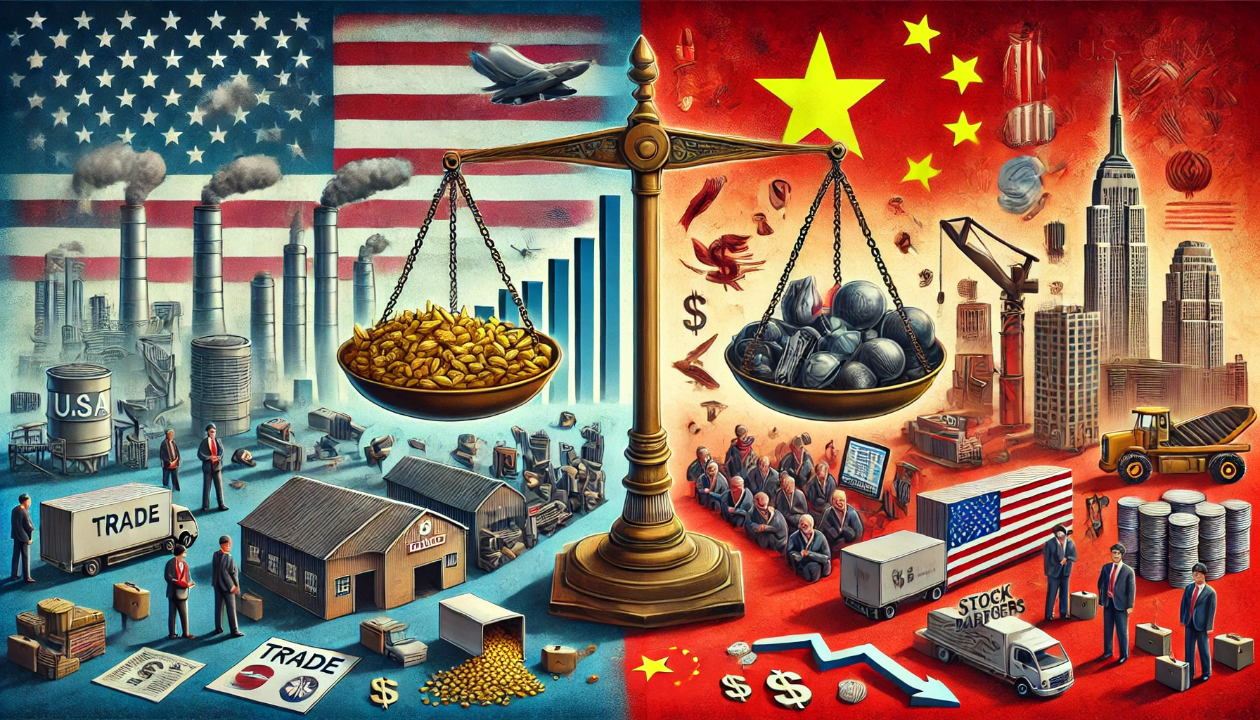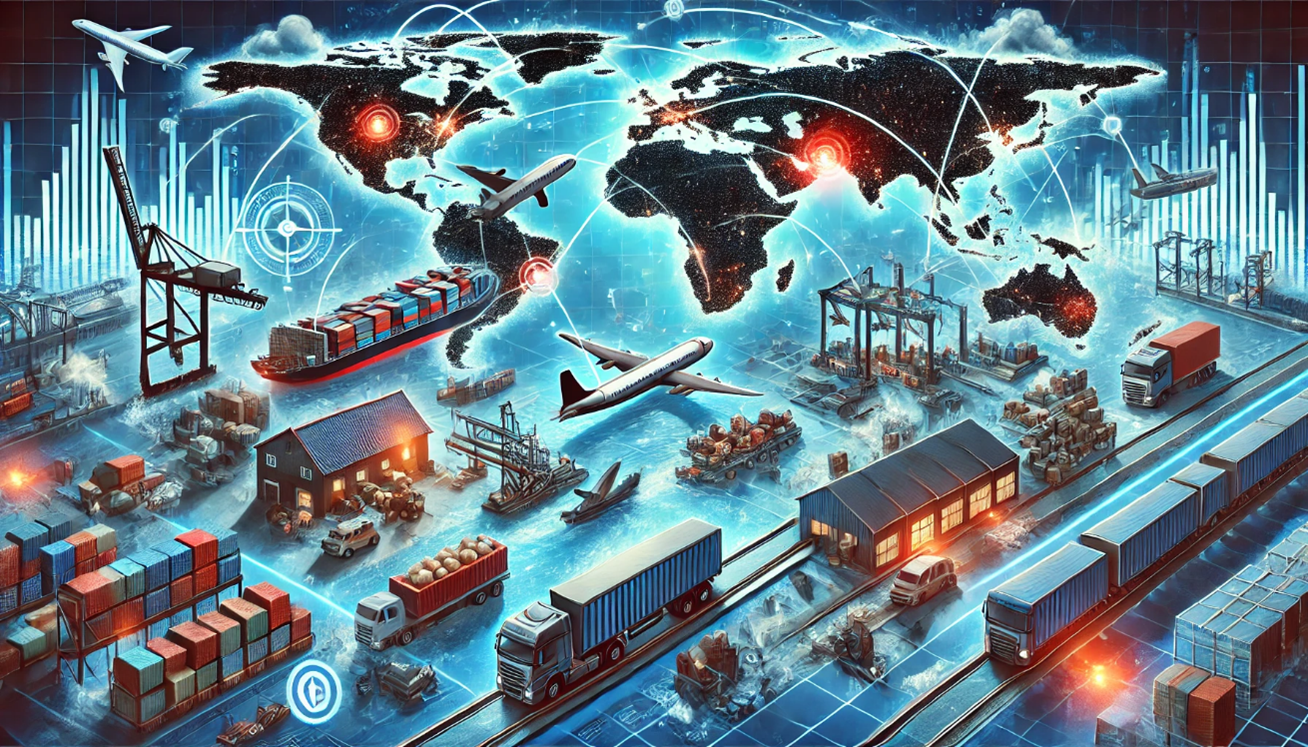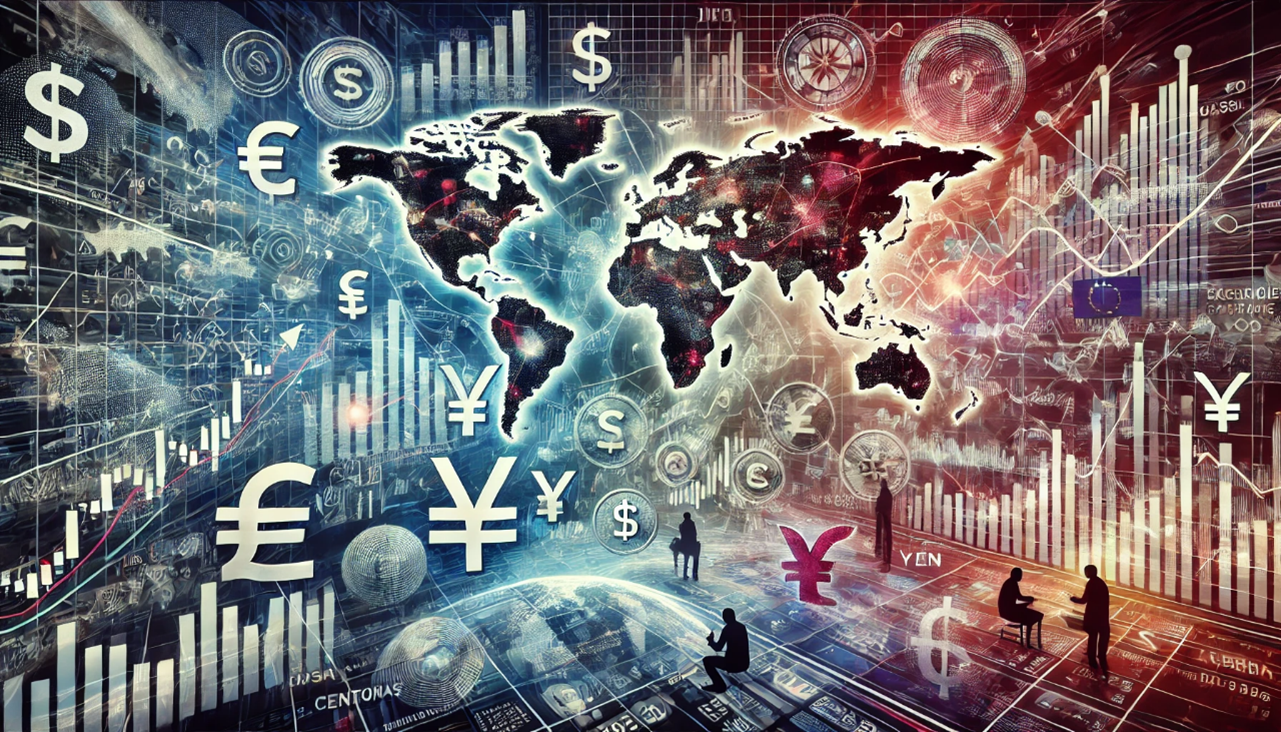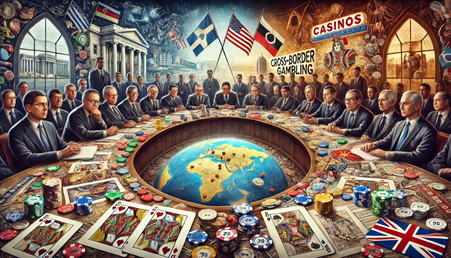What were the economic effects of the U.S.-China trade war?

What were the economic effects of the U.S.-China trade war?
by Sebastian 09:55am Jan 04, 2025

What were the economic effects of the U.S.-China trade war?
The U.S.-China trade war, which began in 2018 and escalated through 2019, had wide-ranging economic effects on both countries and the global economy. The trade conflict involved the imposition of tariffs and other trade barriers by the U.S. on Chinese goods, as well as retaliatory tariffs imposed by China on U.S. goods. These measures were meant to address trade imbalances, intellectual property concerns, and other trade-related issues. Below are some of the key economic effects of the trade war:
1. Impact on U.S. and Chinese Economies
Increased Costs for Consumers and Businesses
Both the U.S. and China experienced increased costs due to the tariffs on goods imported from each other.
U.S. Consumers:The U.S. imposed tariffs on hundreds of billions of dollars worth of Chinese goods, including electronics, clothing, and industrial machinery.As a result, U.S. businesses that imported these goods faced higher input costs, which were often passed on to consumers in the form of higher prices. For example, U.S. tariffs on Chinese consumer electronics and appliances raised the cost for products like smartphones, laptops, and washing machines.
Chinese Consumers:China imposed tariffs on U.S. products like agricultural goods (soybeans, pork, and dairy) and automobiles. These tariffs raised the prices of imported goods, and the resulting disruption in trade led to domestic shortages and inflation in certain sectors, particularly in food.
Reduced Economic Growth
Both countries saw a moderation in economic growth due to the trade conflict.
U.S. Economy:The U.S. economy slowed down as a result of the trade war. While the impact was initially muted, growth weakened over time due to decreased demand for U.S. exports, higher input costs for U.S. businesses, and lower business investment driven by uncertainty. The International Monetary Fund (IMF) and other institutions downgraded their growth projections for the U.S. as a result of the trade war.
Example:The U.S. agricultural sector was especially hard-hit, with farmers suffering from reduced exports of soybeans and other products to China, which had been a major market for U.S. agricultural exports.
China’s Economy:China faced slower economic growth as a direct result of the trade war,with manufacturing and export sectors particularly affected. The tariffs hurt China's ability to export goods to the U.S., leading to a reduction in export revenues. The IMF lowered China’s growth projections for 2019, predicting that the trade war would result in a loss of 0.5-1.0 percentage points of GDP growth.
Tariffs and Trade Diversion
Both countries experienced trade diversion, where goods were rerouted to other markets to avoid tariffs.
U.S. Shift in Trade:The U.S. sought to mitigate the negative impact of Chinese tariffs by importing goods from other countries, such as Vietnam, Mexico, and other low-cost manufacturers in Asia. This shifted global supply chains, but at higher costs, as alternative suppliers often had higher production costs compared to China.
China Shift in Trade:Similarly, China sought to reduce its reliance on U.S. goods, turning to alternative markets, such as the European Union, South Korea, and other Southeast Asian countries, for products like agricultural commodities, electronics, and machinery. However, this shift was not always smooth, as the Chinese economy faced challenges in finding alternate markets for all its exports.
2. Impact on Global Supply Chains
Disruption of Global Supply Chains
The trade war disrupted established global supply chains, which are deeply interconnected between the U.S., China, and other countries.
Supply Chain Shifts:Many U.S. and Chinese companies sought to mitigate the impact of tariffs by relocating manufacturing operations or finding alternative suppliers.For example, some U.S. companies that had relied heavily on Chinese production began moving their operations to countries like Vietnam, India,and Mexico. This phenomenon, known as "nearshoring", helped reduce exposure to Chinese tariffs but often led to higher production costs and delays.
Reconfiguration Costs:The process of finding new suppliers and shifting production chains incurred significant costs for businesses, disrupting production cycles,and leading to inefficiencies. These costs were borne by companies, and some were passed on to consumers in the form of higher prices.
Increased Complexity in Trade Relations
As trade barriers increased, the complexity of conducting international trade also grew. Companies faced more uncertainty and administrative burdens due to changing tariffs, customs procedures, and regulatory requirements.
Example:Many companies had to adjust their logistics and procurement strategies,leading to a more fragmented global supply chain.
3. Impact on Foreign Direct Investment (FDI)
Decline in Investment Confidence
The trade war created a climate of uncertainty, which dampened investment confidence in both the U.S. and China.
U.S. and China Investment Slowdown: In 2019, global FDI flows were slower than expected, partly due to the ongoing trade tensions. Multinational companies were hesitant to invest in markets where trade policies were in flux, particularly those related to tariffs and trade barriers.
Shift in FDI Patterns:Some companies shifted their investment focus away from the U.S. and China toward other regions, such as Southeast Asia and Europe, where business conditions were perceived as more stable. Additionally, companies that had planned to expand in China started exploring alternatives, especially due to concerns about the future of China’s role in global trade.
4. Impact on Currency Markets and Exchange Rates
Exchange Rate Volatility
The trade war led to increased volatility in currency markets as investors reacted to the economic uncertainty surrounding tariffs and trade policies.
U.S. Dollar and Chinese Yuan: The U.S. dollar generally appreciated against the Chinese yuan during the trade conflict. China’s response to U.S. tariffs included devaluing the yuan in an attempt to make Chinese exports cheaper and more competitive in international markets. This led to a currency war dynamic, where both sides used their currencies to gain a competitive advantage in global trade.
Global Currency Market Effects: The trade tensions also affected global currencies,as emerging market economies, which rely on trade with both the U.S. and China, saw fluctuations in the value of their own currencies. Countries like Brazil, India, and Mexico faced challenges as their currencies depreciated in response to trade war uncertainty.
5. Impact on Global Trade and Growth
Global Economic Slowdown
The U.S.-China trade war contributed to a slowdown in global economic growth. The tariffs imposed by both countries disrupted international trade flows, reducing global demand for certain goods and services. The trade conflict contributed to slower global growth in 2019, with the IMF and World Bank revising down their global growth forecasts.
Global Trade Volume:According to the World Trade Organization (WTO), global trade growth slowed in 2019 due to the tariffs and trade uncertainty between the U.S. and China. The WTO projected global merchandise trade growth to be 1.2% in 2019, down from 3.0% in 2018.
Impact on Developing Economies
Developing countries that were economically tied to either the U.S. or China were hit hard by the trade conflict. Countries that heavily relied on Chinese demand for commodities (such as soybeans, metals, and oil) saw reduced exports to China, while countries that were major suppliers to the U.S. felt the impact of reduced American demand.
Commodity Prices:Countries in Africa, Latin America, and Southeast Asia that exported commodities to China were affected by the reduced Chinese appetite for imports due to the tariffs. For example, Brazilian soy farmers were hurt by China's shift away from U.S. soybeans.
6. Political and Strategic Effects
Changing Geopolitical Dynamics
The trade war between the U.S. and China also had political and strategic consequences for global trade and security. The trade conflict exacerbated tensions between the U.S. and China, contributing to broader geopolitical rivalry. As a result, countries were forced to reassess their alliances, and some were caught in the middle of the U.S.-China dispute, trying to balance relations with both superpowers.
Conclusion
The U.S.-China trade war had profound economic effects on both the U.S. and China, as well as on the broader global economy. These effects included higher costs for consumers, disruption of global supply chains, a decline in global investment, and slower economic growth. The trade war also reshaped global trade dynamics by encouraging trade diversification, nearshoring, and changes in foreign direct investment patterns. While both the U.S. and China suffered from the trade conflict, developing countries, particularly those dependent on exports to either of the two countries, were disproportionately affected. The trade war highlighted the risks of protectionism and the interconnectivity of the global economy, leading to broader concerns about the future of international trade relations.






